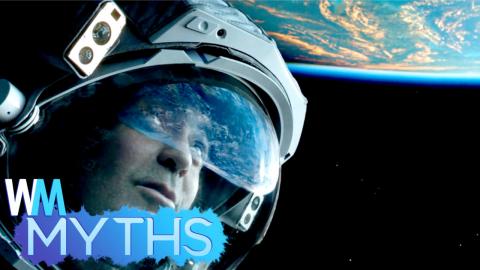Top 5 Myths About Planet Earth

Considering it's the only planet our species has ever lived on, it's amazing how little the average person actually knows about this big blue space marble we call home.
Special thanks to our user Ashjbow for submitting the idea on our interactive suggestion tool: WatchMojo.comsuggest/Top+5+Myths+about+Earth+%28Our+Planet%29
Top 5 Myths About Earth (Our Planet)
Considering it’s the only planet our species has ever lived on, it’s amazing how little the average person actually knows about this big blue space marble we call home. Welcome WatchMojo’s Top 5 Myths. In today’s instalment we’re counting down the five myths about Earth that had us floating aimlessly in an endless abyss…powerless to control our own destinies…unknowing of our purpose-Cuts off-So how about some myths?
#5: Only Bodies of Water Experience The Tides
Most people are familiar with the concept of high tide and low tide. The gravitational pull of the moon and sun, with some help from the centrifugal force of our planet’s rotation, causes a bulge in the world’s oceans twice a day. While the oceanic tides are easily seen and measured, land masses are also affected by the planetary bulge. These “earth tides” certainly can’t compete with the extreme fluctuations of their liquid counterparts, but considering the fact that we don’t even perceive them, their still more significant than the average person would expect. The country of Switzerland rises and falls 10 inches every day. At the equator, land masses experience a differential of 22 inches throughout the day.
#4: Mount Everest is the Tallest Mountain in the World
Before everyone gets up in arms over this one, please allow us to clarify. If you’ve scaled to the very top of Mount Everest, you’ve climbed the highest mountain our planet has to offer... unless you’re willing to wear a weighted scuba suit and subject yourself to skull-crushing underwater pressure. Mount Everest is the highest mountain above sea level, but it loses its title when you remove the sea level consideration. “Altitude” measures the height of something above sea level, and at 29,035ft, Mount Everest has Mauna Kea’s altitude of 13,796ft soundly beaten. But if you’re actually looking for the world’s tallest mountain, from base to peak, Hawaii’s Mauna Kea takes home the title at a staggering 33,497ft.
#3: Just Nuke an Asteroid to Save Planet Earth
Slow down Bruce Willis. Despite what your director might believe, not all problems can be solved by making things explode. The truth is, nuking asteroids is an option, but Hollywood has yet to get it right. In Armageddon, the nukes weren’t nearly powerful enough. In “Deep Impact” the shrapnel would’ve proved devastating to a huge area of the planet. The actual best option is to detonate explosives and deflect any incoming asteroid when it’s still many years away from Earth. NASA is currently working a on a plan to destroy an asteroid in case we ever discover one too close to deflect, but it involves a complex two piece spacecraft the likes of which no sci-fi film has presented to date.
#2: The Sahara is the Biggest Desert
When you hear the word “desert”, you probably imagine a hot, dry, expanse of sand, uninterrupted as far as the eye can see, with the exception of the odd oasis in the distance, which will probably reveal itself as a mirage upon closer examination. But a desert doesn’t need to be hot, or even sandy. It just has to be harsh, desolate inhospitable area of land in which essentials, like food and water, are incredibly scarce. So while the Sahara, covering 3.6 million square miles, is certainly the largest classic desert, the world’s actual largest desert is everyone’s least favourite (and most forgotten) continent, Antarctica, which covers 5.4 million square miles.
#1: People in the Middle Ages Thought the Earth Was Flat
For all their medieval shortcomings, the average person in the Middle Ages didn’t actually think the earth was flat. Most people weren’t educated enough to contemplate the shape of the earth - period. But scholars, nobility and the clergy were all pretty much on the same page regarding the earthly shape - a nice, functional sphere, which had been the dominant accepted geographical theory dating back to Ancient Greece and the Roman Empire. So, why does everyone think that people in the Middle Ages believed the earth to be flat? Revisionist history. Washington Irving, amongst other writers, began to assert that a “Flat Earth” was part of the Christian Church’s medieval doctrine, in an attempt to illustrate the historical conflict between religion and science.
So how many of these myths did you believe? For more revealing top 10s and sometimes scientifically-founded Top 5s, be sure to subscribe to WatchMojo.com.

